- Home
- Alistair Moffat
The Secret History of Here Page 20
The Secret History of Here Read online
Page 20
My neighbour has cut about half of the lush grass in the parks on either side of the Long Track. Starting by skirting the margins, he has cut perhaps ten unbroken rows, looping the field in lazy oblongs, leaving a large island uncut in the middle. It looked as though God had been drawing with a green felt tip pen on the land. Last night my neighbour picked up the rows and round-baled them. Some rolled downhill into our boundary fence.
The effect of this harvest is very beautiful. Where the cutter has been, its passes have shown up the sinuous, almost voluptuous contours of the land, its lines describing long S-shapes through the swales and shallow hollows. Between the pale, lime-yellow of the cut margins and the dense green of the grass still standing, there is an eye-widening, eye-filling contrast. In their stunning works of land art, Charles Jencks and Andy Goldsworthy see and accentuate these natural forms and processes. And are much admired by art critics and the public. My neighbour does it every summer.
The morning was so still not even the spindly stalks of cow parsley were moving in the verges of the Long Track. Looking at the lush landscape, I lost all sense of time and stayed out for much longer than my usual forty minutes with Maidie.
At 5 a.m. tomorrow I will leave on an expedition. To research a book on the Christian conversion of the Hebrides, I will be going island-hopping. Columba is only the most famous of these leathery old saints who founded monasteries and hermitages down the Atlantic shore in the sixth and seventh centuries. My first landfall will be on Eileach an Naoimh, a rocky, uninhabited island where the wide mouth of the Firth of Lorne opens onto the mighty ocean. Islands and the open sea make me nervous. I fear the deeps because I cannot swim and worry about being stranded on an island in a storm. No mobile phone signal to summon help, no shelter except rocky overhangs, and only Co-op pork pies and Cadbury’s Fruit & Nut chocolate standing between me and extinction. But how else can I write about these men and their mission unless I sail where they sailed and walk where they walked? I have packed, repacked and checked the weather forecast every hour. Thunder and lightning overnight and rain clearing in the morning.
It will be an adventure, a journey to a different Scotland, and not part of this story. Unless I fail to return . . . in which case this will be the last entry . . .
28 June
I have returned, more or less in one piece. Walking out with Maidie in the softness of the morning mist, I felt myself exhale after four frantic days of ferries, island-hopping, map-reading, note-taking and hundreds of phone photographs. After the drama of the Hebridean landscape, I felt a peace dripping slowly from the clearing skies and knew that the sun would make the day glow in this quiet, fertile and familiar landscape. It was good to be home, good to resume the unthinking routines of feeding dogs, of leading out horses and of sitting at my desk scribbling. I see an email from Rory Low about some new Elizabethan finds and I will try to find a day for a systematic survey of the Doocot Field with Walter Elliot and his magical divining rods. I am certain there is a story waiting under the grass.
29 June
Out early in the summer warmth, Maidie and I were startled by a sharp squawk in the skies above the Top Track. Like a squadron of spitfires, six herons were flying south towards the Tile Field. Their grey undercarriages and their tucked-in necks were clearly visible. Herons are usually silent, even dignified, aloof, as they glide over us on a higher plane. I wondered and wished I understood more about the calls of birds, what they are communicating and why those solitaries were flying in a noisy formation.
In hedges at the edge of woods and intertwined with shrubs, the dog roses have come out all at once, it seems. Five-petalled, milky-white tinged with pink and perfectly symmetrical, they looked heraldic, like the Tudor rose, a diplomatic combination of the red of the Lancastrians and the white of the Yorkists. Their scent was delicate and all the sweeter for that.
30 June
The Common Burn has completely dried up. An ancient boundary, the resort of frogs, even the very occasional otter, it no longer flows through our history. Despite frequent and prolonged wet weather, and the surprising fact that it still ran after the long, dry spell of six weeks last May and June, there is now nothing but a bed of damp, fissured mud. Somewhere along its length, something has changed.
Now that my neighbour has harvested his first cut of silage, completing his round-baling in yesterday’s warmth, I can walk over the grass park between the Long Track and the course of the burn. There is an old Irish bridge, a wide pipe long ago laid on the bed of the burn and then covered with earth, that links the park with the Tile Field and I wondered if it was blocked. But there was nothing. And both up and downstream no water ran. Tall grasses grew where once there was a flow. Plenty of water runs under the stone bridge that carries the Long Track to the Old Roman road and its modern tarmac. So there must be a blockage between there and the Irish bridge. I will walk that line as soon as I can.
If the water table has dropped dramatically and suddenly, it will not only make frogs and other aquatics homeless and cease to be a corridor for otters (there is fencing on either side of the burn to create this), it would also not be without precedent around our farm. Such changes in the past have had serial and even calamitous effects. Selkirk’s burgh records note a bitterly fought legal case that revolved around the careless management of water. In 1661, John Riddell, Laird of the Haining, drained the loch in front of his house, lowering its levels by running it off through a remarkably named stream. The Clock Sorrow runs behind the Riddells’ mansion and downhill to the River Ettrick. The first element of the name derives from the Latin cloaca for a sewer or a drain. In Ancient Rome the Cloaca Maxima ran into the Tiber, carrying what the citizens called acqua nera, black water. What caused lawyers to intervene in 1661 was brown water.
Beneath the Haining Loch several ferrous springs bubble up and sometimes make the waters of the loch look very turgid. Pike prosper in this highly mineralised mixture, but other species have little or no tolerance for iron. When Riddell drained the water through the Clock Sorrow and into the River Ettrick, it had such a catastrophic effect on the famous salmon fisheries at the mouth of the Tweed that the Mayor of Berwick instructed lawyers to issue a writ for damages. The Ettrick is a major tributary of the Tweed, and as the iron-rich water clouded the river it killed the salmon. The second element of the name of the Clock Sorrow might be obscure but it was apposite in 1661.
Maidie was unimpressed by my search through the dense grasses, thistle and nettles on either side of the dried-up Common Burn. When DEFCON 1 ignites, she will launch herself ferociously at anything with four or even two legs, regardless of their size, but the little terrier refuses to go through nettles or thistles despite her thick, white coat. She simply sits down, sets her jaw, stares at me and refuses to budge until I sigh, walk back and pick her up. I am glad that at 7 a.m. no one witnesses this.
July
1 July
Recently I came across a remarkable document, another crack in the continuity of time that stories can slip through. Three hundred and forty-eight years ago, a stud for the breeding of thoroughbred horses was almost set up on our farm. A contract was agreed between John Riddell of the Haining, the arch polluter, and King Charles II. The whole estate was laid out for breeding. Stables were built (their successors still exist), paddocks fenced and all the necessary arrangements were made. It seems that Charles II had agreed to send a stallion to the Haining, but he never arrived and the king was forced to compensate Riddell.
In 1603 King James I and VI visited Newmarket Heath in Suffolk and pronounced it perfect for horse racing, a sport he loved. His grandson was equally besotted, and Charles II even rode as a jockey at Newmarket. He always won. At the end of the seventeenth century what are known as the foundation stallions began to arrive in Britain. These were much admired Arab horses from the Middle East, difficult to acquire, famed for their fineness, stamina, intelligence and speed. The Byerley Turk was captured from the Ottomans by Captain Robert Byerley at t
he Battle of Buda[pest] in 1686. He then charged in the van of King William of Orange’s cavalry at the Battle of the Boyne in 1690 before standing at stud (the horse, not the captain) at Middridge Hall in County Durham. The Darley Arabian was bought in 1704 by Thomas Darley, the British Consul at Aleppo in Syria, for the fabulous sum of 300 gold sovereigns, and he stood at Aldby Hall in Yorkshire. And the final foundation stallion, the Godolphin Arabian, was born in 1724 and bought by Edward Coke of Longland Hall in Derbyshire. All so-called ‘blood’ horses are the descendants of these three Arabians, including our own beautiful black filly, Sula’s Imprint. That means Topsy, our thoroughbred mare, has at last fulfilled the royal contract, three and a half centuries after it was agreed.
2 July
The rabbit population has exploded. The lush, hot and damp summer has supplied juicy grass and every morning they scutter everywhere, even a Beatrix Potter-perfect baby hops around the terrace, driving Maidie into paroxysms of rage. When I finally managed to drag her out this morning, the cows at Huppanova were lying down with their calves, already sunbathing, and as we passed the shade of the Haining Wood I noticed that the trees seemed to make the birdsong echo.
3 July
Dragging a reluctant Maidie behind me, I walked the line of the Common Burn to where I thought it spurred off from the Hartwoodburn. There was no flow at all, just a damp seed bed for tall, dew-soaked grass. When I reached the junction with the Hartwoodburn, I had to climb the barbed wire fence of the otter corridor and thrash my way through the nettles and willowherb to get close enough to see if there was a blockage. Cocking her head quizzically from side to side, Maidie listened to me curse as I was stung and pricked.
There was no blockage I could see, just a six-inch sill carved out by the Hartwoodburn as it turned into the shadows of a sitka wood. Except in winter, I suspect, when rain was heavy and persistent, the Common Burn has never taken its water from the Hartwoodburn. The sill was stony and compacted, well established and definitely not a pile-up of silty mud. All of which led me to wonder where the burn’s flow of water had come from and why it had suddenly dried up. The grass park next to the Long Track slopes towards it and rain run-off will have seeped in, and there is also an old spring that rises in one of the swales of the park, near our boundary hedge. Perhaps that has failed or its water has found a different course. The only obvious recent change was my neighbour’s repair of his drains in the Tile Field, but there is a slight hollow where he dug and no obvious fall towards the Common Burn.
Soaked up to the knees but happy to walk and dry off in the warm sunshine, I saw sheep moving across the southern ridge and could hear the gentle purr of the shepherd’s quad bike. All was unhurried as his dogs loped uphill, circled behind the flock and began to push them towards the gate to fresh pasture.
4 July
The old spring from the grass park that trickled through the wood behind the stables to feed the Common Burn has also completely dried up. Arms in the air, wading through chest-high nettles and tangles of sticky willy, I could see nothing but a dark bed of mud. No water had flowed there for some time. Only a rainwater drain was dribbling into the burn. Something radical has changed. If the water table has dropped, then other burns should be affected. But the Nameless Burn in the East Meadow and the Hartwoodburn are still running. Their levels are what you would expect in July, but the water is clear and moving. I am vexed at the loss of the Common Burn and its habitat, and even more vexed that I don’t understand why it has gone.
5 July
When Rory began to find many medieval coins in the Doocot Field, he was careful to mark the find-spots accurately. This mosaic of dots greatly intrigued Walter Elliot, and me, because it was most dense on either side of the Long Track and at the northern end of the field, beyond the ruins of the doocot, not far from the site of Selkirk Castle. Yesterday afternoon, in spectacular fashion, Walter joined up the dots.
After decades in the fencing business – when he used divining rods to discover hidden ditches and postholes, thereby saving a lot of unnecessary digging – Walter turned his techniques to archaeology. No one, including Walter, understands exactly why it works and how two metal rods bent at right angles and held loosely in the fists suddenly turn inwards when a feature is detected. But it does work. Not everyone has the ability to divine, and when Walter taught me how to hold and use the rods many years ago (we were looking for the course of a water pipe on the farm) I had results immediately, whereas when Lindsay held the rods, there was no movement.
Now eighty-four, Walter has been very unwell of late and it has taken a few weeks for him to recover. But when we drove up the Long Track into the Doocot Field, he jumped smartly out of the pick-up and began looking around. Walter has a well-honed eye for the lie of the land and, handing me a spare pair of rods, we walked up the side of the Long Track. As we moved slowly, staying abreast, about five yards apart, both sets of rods immediately began to swing at exactly the same moment. Pacing out from where they first moved, Walter saw the rods swing again and soon he had worked out that we were standing on a rectilinear, subterranean feature measuring about five metres by three metres and with a door on the track side. Almost certainly built of wood, it was probably a cottage or perhaps a workshop of some kind. Then we found another, and another, a line of three buildings running by the side of the track. Between two of them was space for a lane.
In less than an hour we had discovered what is almost certainly the faded outline, no more than a distant echo, of an early medieval village whose buildings had long ago disintegrated and sunk back into the soil. But their wooden posts, and wattle and daub walls, had left a whisper of people, their conversations, their troubles and joys, the transit of lives lived perhaps a thousand years ago. There were houses on both sides of the Long Track and then another row running at right angles, towards the site of Selkirk Castle, a pit behind one of them, and the remains of their backlands, the fenced areas where they often kept a cow overnight, where they dumped rubbish and sewage and sometimes grew vegetables. Beyond these we found the long ago ploughed-out ditches of runrig cultivation and they drained downhill towards the Haining Loch. Under the lush summer grass lay the watermark of a lost village. It was absolutely exhilarating to spend the afternoon searching with the rods, listening to Walter work out what we were finding, bringing all of his vast experience to bear. The site was completely unsuspected until Rory began to find coins and other items, and what Walter and I discovered brought the otherwise ordinary field to vivid life.
Rory’s finds, not only of coins but also of weighing apparatus, the large piece of lead and much else, appear to have been the sole surviving deposits, in metal, of a community that lived in wooden houses, organic material that has completely disappeared. Walter wondered if this was the early and original Anglian village of Selescirce, ‘the church by the hall’, that eventually gave its name to the town of Selkirk. It was first recorded as Seleschirche in 1124, soon after the castle was built. Its location at the north end of the Doocot Field also places it near a road junction, where the Long Track joined with the road from the valleys and the west, where I had walked one evening a few weeks ago. A faded map of the long past seemed slowly to be coming back into focus. There are certainly more stories lying hidden under the grass where the cows and their calves browse and where I had walked often with Maidie. But they are no longer lost and forgotten, these people who once lived where we live now.
6 July
Having shed their tiny white flowers, the wild raspberries are beginning to form on the canes that line the Bottom Track. When ripe, they are sweet and tart at the same time, and the trick in picking them is timing. When the berries turn red and become easily visible, the birds peck at them and seem not to care about ripeness. I hope to harvest what they leave at exactly the right moment. Wild rasps and Greek yoghurt make a good summer breakfast.
This morning I was surprised to see the lime-green of a cut grass park by the Thief Road, uphill from Hartwoodmyres, w
here the Ettrick Hills begin to rise in the west. Never having seen that before, I later looked on the Pathfinder map to see what the altitude was. Harvesting a grass crop, either hay or silage, at nine hundred feet is new, at least to me. We lie on the six hundred-foot contour. Perhaps this is another sign of climate change. When the vacuum that is political leadership across the world fails to deal with this emergency, as it surely must, and the processes become irreversible, the great migrations will begin. From the increasingly uninhabitable lands around the equator, and even southern Europe, people will be forced to move north. If the warmer and wetter climate expands, the land available for cultivation, even if only for grass, in Scotland we will become an attractive destination. Lying at the farthest north-west end of Europe, and with wide areas very lightly populated, we should expect to see more and more people come, many of them desperate.
8 July
The salt sea air of the islands on the edge of the ocean startled me when I reached the west coast two weeks ago. Thinking of the stink of fish and diesel swirling around the quaysides at Oban, the spray on my face as the ferry carried us across the Firth of Lorn to Lismore, brought back to me the absolute dominance of the sea and how it overwhelms the senses of a landlocked person like myself; sight, smell and sound are all very different. Our farm lies almost fifty miles from the North Sea in the east, another fifty from Edinburgh and the Firth of Forth in the north, and more than fifty from the Solway Firth and the Irish Sea. We are a long way inland. Here the air is earthy, sometimes even scented, sounds are not echoic and the hundred colours of green stretch away on every side. All very different – so familiar that I find the details of that difference difficult to describe. It is the air that I breathed when I was born and when I roamed the countryside as a boy and a young man. And I shall breathe my last here.

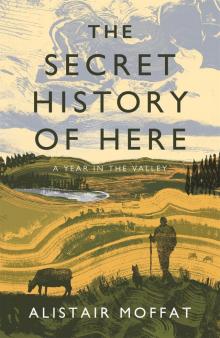 The Secret History of Here
The Secret History of Here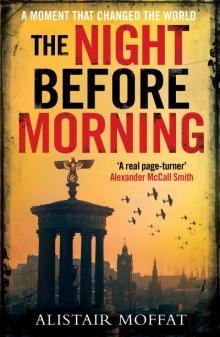 The Night Before Morning
The Night Before Morning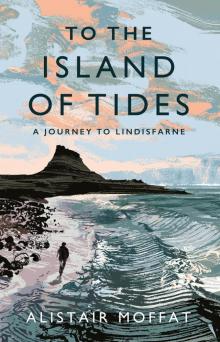 To the Island of Tides
To the Island of Tides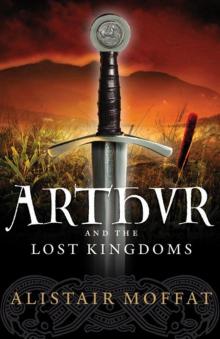 Arthur and the Lost Kingdoms
Arthur and the Lost Kingdoms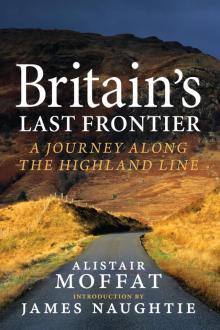 Britain’s Last Frontier
Britain’s Last Frontier The Faded Map: The Lost Kingdoms of Scotland
The Faded Map: The Lost Kingdoms of Scotland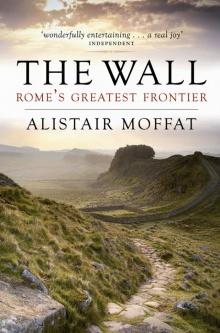 The Wall
The Wall